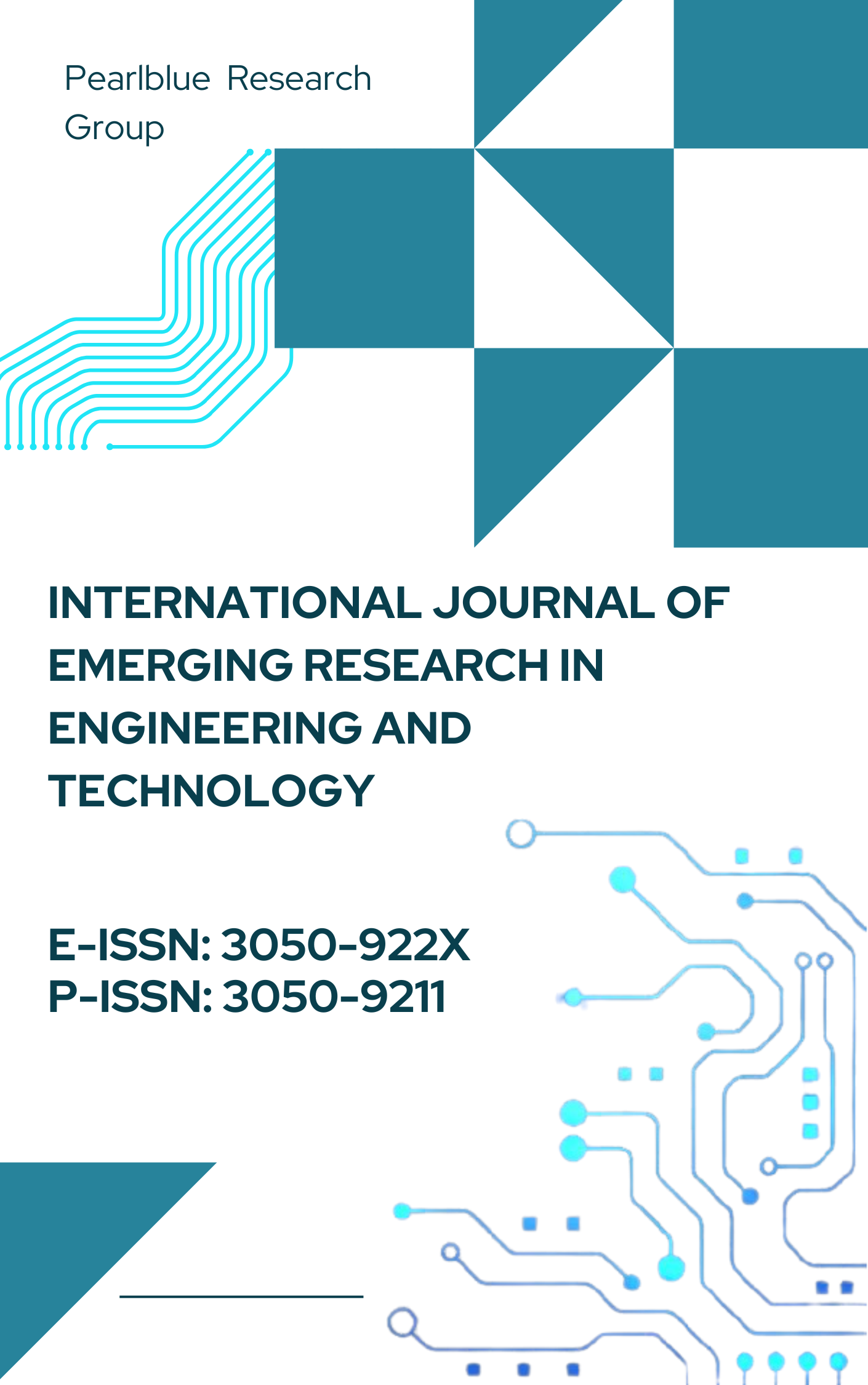What Is The Right Security Posture? A Perspective on Cloud Computing Security Threats and Risk Assessment
DOI:
https://doi.org/10.63282/3050-922X.IJERET-V4I4P112Keywords:
loud security, cloud risk assessment, security posture management, zero trust architecture, identity and access management (IAM), data-centric security, cloud misconfiguration, continuous assurance, multi-cloud environments, threat modelling, CSA CCM, NIST SP 800 53, ISO/IEC 27001, FAIR methodology, MITRE ATT&CK for Cloud, shared responsibility model, cloud-native applications, container security, Kubernetes security, cloud compliance, regulatory alignment, data protection, encryption, tokenization, incident response, vulnerability management, DevSecOps, cloud posture management, security automation, continuous monitoring, breach prevention, risk quantification, governance frameworksAbstract
Cloud computing has rapidly become the foundation for digital transformation and is increasingly introducing new dimensions of security risk that extend beyond those in traditional on-premises systems but are more dynamic, more distributed, and often more complex. For businesses, the question is this: What does good security mean in the age of cloud? The paper describes the concept of a cloud security posture, in other words, describing the orchestrated technical, procedural, and governance measures that enable an organization's objectives and threat landscapes to be met while also complying with standards. Leverages authoritative sources such as NIST SP 800‑53 Rev. 5, NIST SP 800‑37 Rev. 2, ISO/IEC 27001/27017/27018, Cloud Security Alliance (CSA) Cloud Controls Matrix (CCM v4), and MITRE ATT&CK for Cloudthis practical research presents a risk‑assessment framework that combines effective threat modelling with semi-quantitative scoring and FAIR‑based quantitative analysis. Our study indicates that misconfigurations, identity compromise, insecure APIs, supply‑chain dependencies, and data governance deficiencies were the most prevalent attack patterns, with evidence from breach reports like Verizon DBIR 2022 and empirical studies on hypervisor and side‑channel attacks. Rather, we propose that the correct security posture is a relative one that varies depending upon organizational risk tolerance, critical asset tamper resistance requirements, and operational continuity objectives. Critical attitude attributes do converge, across industry sectors: (i) identity‑centric with phishing-resistant multi-factor and just-in-time; (ii) data‑centric with encryption, tokenization, and immutable recoverability; (iii) automated configuration along access management to mitigate drift and sprawl of privilege; (iv) telemetry-led detection at low mean time to detect/respond level; and (v) continuous assurance via ATT&CK-mapped validation as well as policy-as-code.
We illustrate the value of deploying these measures through their application to an example case study from a financial‑services domain, and we show that their use can reduce modelled annualized loss exposure by 35–55% relative to baseline. The paper emphasizes the cruciality of outcome-based metrics, including preventable incident rate, control reliability, and MTTD/MTTR as the real measures of posture maturity. Last, we provide a research agenda based on empirical validation of control effectiveness, standardization of posture metrics, and the incorporation of automated assurance pipelines. Our study offers contributions to academia and praxis by (a) defining the meaning of “right” cloud security posture, (b) consolidating authoritative best practices and practical experience into a single risk‑assessment approach, (c) providing evidence about how well-aligned [Jan14] improvements render actual impact in multi‑cloud financial settings, as well as (d) highlighting open potential challenges in cross‑cloud posture harmonization or automated resilience validation. This work is designed for organizations to use as a guide to adopt the cloud by providing an informed, standards-aligned, and defensible pathway that balances innovation with risk management
References
[1] M. Armbrust et al., “A View of Cloud Computing,” Communications of the ACM, vol. 53, no. 4, pp. 50–58, 2010.
[2] P. Mell and T. Grance, “The NIST Definition of Cloud Computing,” NIST SP 800 145, 2011.
[3] NIST, “US Government Cloud Computing Technology Roadmap, Volume I & II,” NIST SP 500 293, 2011–2014.
[4] NIST, “Risk Management Framework for Information Systems and Organizations,” NIST SP 800 37 Rev. 2, 2018.
[5] NIST, “Security and Privacy Controls for Information Systems and Organizations,” NIST SP 800 53 Rev. 5, 2020.
[6] M. Jansen and T. Grance, “Guidelines on Security and Privacy in Public Cloud Computing,” NIST SP 800 144, 2011.
[7] L. Badger et al., “Cloud Computing Synopsis and Recommendations,” NIST SP 800 146, 2012.
[8] M. Souppaya and K. Scarfone, “Application Container Security Guide,” NIST SP 800 190, 2017.
[9] J. Rose, O. Torres, S. Dodson, and others, “Zero Trust Architecture,” NIST SP 800 207, 2020.
[10] ISO/IEC 27001:2013, “Information Security Management Systems Requirements,” ISO, 2013.
[11] ISO/IEC 27017:2015, “Code of Practice for Information Security Controls for Cloud Services,” ISO, 2015.
[12] ISO/IEC 27018:2019, “Code of Practice for Protection of PII in Public Clouds,” ISO, 2019.
[13] Cloud Security Alliance, Cloud Controls Matrix v4, 2021.
[14] ENISA, “Cloud Computing Security Risk Assessment,” ENISA Reports, 2009–2021.
[15] MITRE Corporation, “MITRE ATT&CK for Cloud Matrices,” 2019–2022.
[16] OWASP, “OWASP Top 10 – 2021: The Ten Most Critical Web Application Security Risks,” 2021.
[17] OWASP, “Application Security Verification Standard (ASVS) v4.0.3,” 2021.
[18] OWASP, “Software Assurance Maturity Model (SAMM) v2.0,” 2020.
[19] Center for Internet Security, “CIS Benchmarks for Amazon Web Services,” various editions through 2022.
[20] Center for Internet Security, “CIS Kubernetes Benchmark,” editions through 2022.
[21] Verizon, “2022 Data Breach Investigations Report (DBIR),” 2022.
[22] T. Ristenpart et al., “Hey, You, Get Off of My Cloud: Exploring Information Leakage in Third Party Compute Clouds,” CCS, 2009.
[23] Y. Zhang, A. Juels, A. Oprea, and M. Reiter, “HomeAlone: Co-Residency Detection in the Cloud via Side Channel Analysis,” IEEE S&P Workshops, 2011.
[24] F. Liu et al., “Last Level Cache Side Channel Attacks are Practical,” IEEE S&P, 2015.
[25] K. Zetter, “Amazon S3 Bucket Exposures: A Survey,” industry analysis through 2022.
[26] D. Fernandes, L. Soares, J. Gomes, M. Freire, and P. Inácio, “Security Issues in Cloud Environments: A Survey,” International Journal of Information Security, 2014.
[27] CNCF, “Cloud Native Security Whitepaper,” 2020–2022 editions.
[28] NIST, “Guide for Conducting Risk Assessments,” NIST SP 800 30 Rev. 1, 2012.
[29] J. Freund and J. Jones, Measuring and Managing Information Risk: A FAIR Approach, Elsevier, 2014.
[30] Amazon Web Services, “AWS Well-Architected Framework: Security Pillar,” 2022.
[31] Microsoft Azure, “Azure Well Architected Framework: Security Pillar,” 2022.
[32] Mohanarajesh Kommineni. Revanth Parvathi. (2013) Risk Analysis for Exploring the Opportunities in Cloud Outsourcing.



